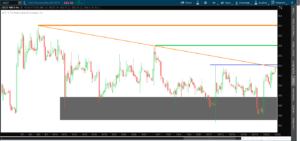 None can learn to swim without soaking his feet into the water first. Likewise, knowing all the aspects and procedures of Forex trading will be pretty impossible without understanding the terminologies regarding the market. There are hundreds of such terms and expressions by learning which Forex traders can straighten up their Forex learning momentum.
None can learn to swim without soaking his feet into the water first. Likewise, knowing all the aspects and procedures of Forex trading will be pretty impossible without understanding the terminologies regarding the market. There are hundreds of such terms and expressions by learning which Forex traders can straighten up their Forex learning momentum.
Advance Forex Terminologies
Assuming that you have already known all the root-level simple terms relating to Forex, we have presented some mid-level ones. We hope they will bring value to you.
-
Lot, Or Lot Size
When a person buys a currency, Forex defines a specific volume that he wants to buy. This volume or amount is called a lot. Depending on the size of the lot size, you can manage your risk exposure. As a novice trader, always try to trade with small lot and keep the risk factors low.
-
Pip Value
The pip refers to the smallest price movement of a certain asset. The value of pip shifts with the momentum of the market. It follows the market movement parallelly. So, it will be a sagacious move for the traders to keep their eyes on different pairs they want to trade and how the market revolves around them.
To be benefitted largely or extract a massive amount of profit, you have to deal with a larger amount of your chosen asset. The larger the amount, the more value will be generated for every positive pip change and the higher amount of profit it will yield.
-
Margin
The margin shows the minimum size of a fund, presented as a percentage, that a person requires to have to enter a trade and keep it open. You can find more info about the margin trading account at Saxo and use it more effectively in trading profession. But to ease your learning process, we will also site a simple example.
Let’s say, to buy a position that equivalents to 10,000 USD on a 2% margin, you have to maintain at least 200 USD in your main account. With trading margins, you are trading more by investing only a small percentage of your capital. If you cannot get the concept behind it, you can take all the extra amount as a loan that you are taking from your broker.
You can claim your price when your assumption of the market movement turns out to be right. Conversely, if it takes other paths, you have to compensate for the entire position.
-
Leverage
Like margin, leverage is the system deploying which one can take a loan against a small amount from his capital. People take this loan to buy a larger position in a trade that they cannot afford with their available account balance.
How much leverage one will be able to deploy will totally depend on the brokerage system and its flexibility. The offered leverage amount will also vary. It can be from 10:1 to 500:1. That means, if one’s broker allows, he will be able to buy a position 500 times larger than his invested amount. He can claim profit for the entire position.
Likewise, if things go wrong, brokers will demand the loss amount to cover the same position. That is an extreme risk to take.
-
Equity
Equity represents the total tradable money in a trader’s account, including the losses and profits. For example, if anyone’s initial deposit is 15,000 USD, and he earns a profit of 5,000 USD, his equity will be 20,000 USD in total.
-
Used Margin
It is the money that one keeps aside by his broker to sustain his present trading positions open and to avoid being end up with a negative balance.
-
Free Margin
You can get the amount of free margin by subtracting the used margin volume from the total equity. Free margin the portion of an account that is available to invest in other trades.
Being a massive industry, Forex has numerous terms and expressions to name all its activities and features. This article has elaborated on only a few of the entire Forex trading vocabulary. To learn more, make use of other resources.


